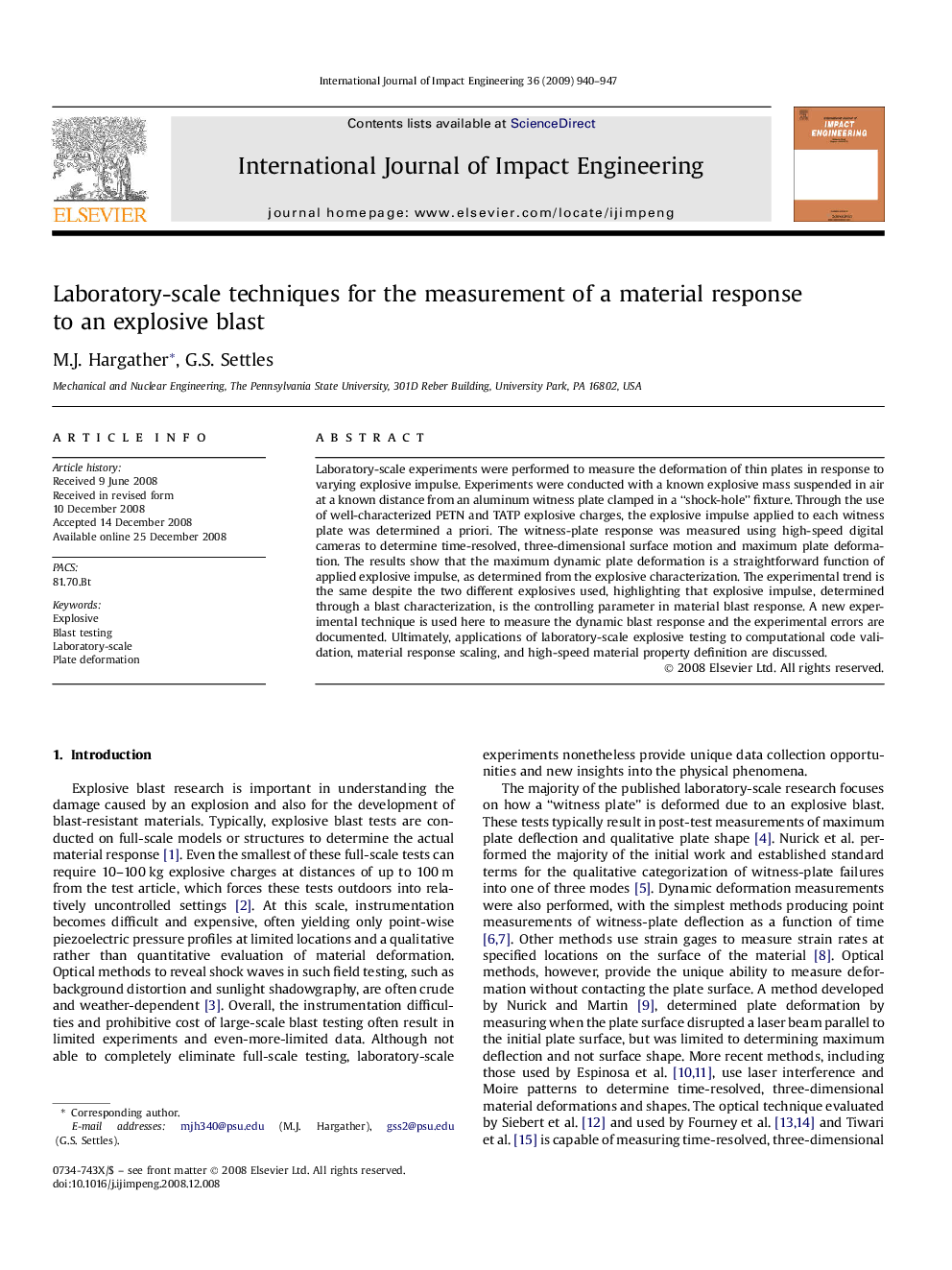| کد مقاله | کد نشریه | سال انتشار | مقاله انگلیسی | نسخه تمام متن |
|---|---|---|---|---|
| 778745 | 1464138 | 2009 | 8 صفحه PDF | دانلود رایگان |

Laboratory-scale experiments were performed to measure the deformation of thin plates in response to varying explosive impulse. Experiments were conducted with a known explosive mass suspended in air at a known distance from an aluminum witness plate clamped in a “shock-hole” fixture. Through the use of well-characterized PETN and TATP explosive charges, the explosive impulse applied to each witness plate was determined a priori. The witness-plate response was measured using high-speed digital cameras to determine time-resolved, three-dimensional surface motion and maximum plate deformation. The results show that the maximum dynamic plate deformation is a straightforward function of applied explosive impulse, as determined from the explosive characterization. The experimental trend is the same despite the two different explosives used, highlighting that explosive impulse, determined through a blast characterization, is the controlling parameter in material blast response. A new experimental technique is used here to measure the dynamic blast response and the experimental errors are documented. Ultimately, applications of laboratory-scale explosive testing to computational code validation, material response scaling, and high-speed material property definition are discussed.
Journal: International Journal of Impact Engineering - Volume 36, Issue 7, July 2009, Pages 940–947